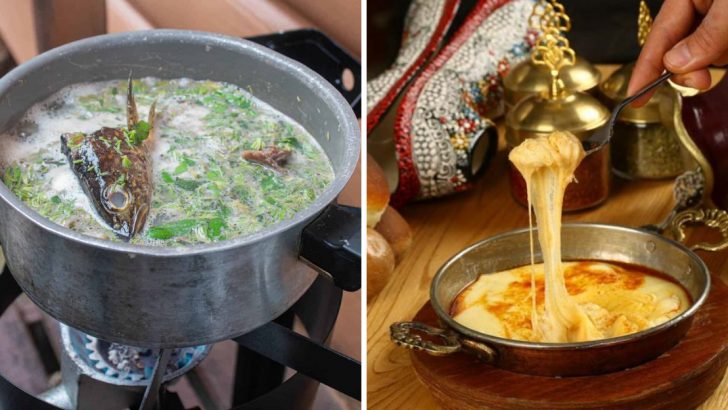History is full of strange culinary experiments, and not all of them aged well. Some ancient meals were so bizarre, pungent, or downright unsettling that even the boldest modern chefs might hesitate before lifting a spoon.
These dishes tell the story of survival, status, and some questionable taste along the way. Here are 14 historical meals that might send today’s chefs running for the door.
1. Garum

Holy mackerel! Romans were absolutely OBSESSED with this pungent fermented fish sauce, slathering it on practically everything from bread to olives. Made by layering fish guts with salt and leaving it to ferment in the sun (yum?), garum was the Roman equivalent of ketchup – no meal complete without it.
Wealthy Romans imported the finest garum from specific coastal towns, where the smell of production was so overwhelming that factories were regulated to operate outside city limits. The sauce added that perfect umami punch that made simple foods like bread and olives into satisfying meals.
2. Ful Medames

Pharaohs munched the same breakfast as peasants – now that’s equality through fava beans! Ful medames, a hearty stew of mashed fava beans seasoned with olive oil, lemon, and herbs, has sustained Egyptians for literally thousands of years.
Archaeological evidence suggests this dish dates back to the time of the pyramids, making it possibly the world’s oldest documented prepared food still eaten today. Traditional preparation involved cooking beans in clay pots overnight, buried in the dying embers of fires.
3. Kykeon

Secrets and cereal – ancient Greeks knocked back this mysterious barley drink during sacred religious ceremonies! Kykeon wasn’t just breakfast; it was the centerpiece of the Eleusinian Mysteries, ancient Greece’s most famous secret religious rituals.
Made from barley, water, and herbs (possibly including mint), this thick, porridge-like beverage was sometimes sweetened with honey. Some scholars controversially suggest the drink may have contained naturally-occurring psychoactive compounds from ergot fungus, explaining the visions reported by initiates.
4. Viking Blood Stew
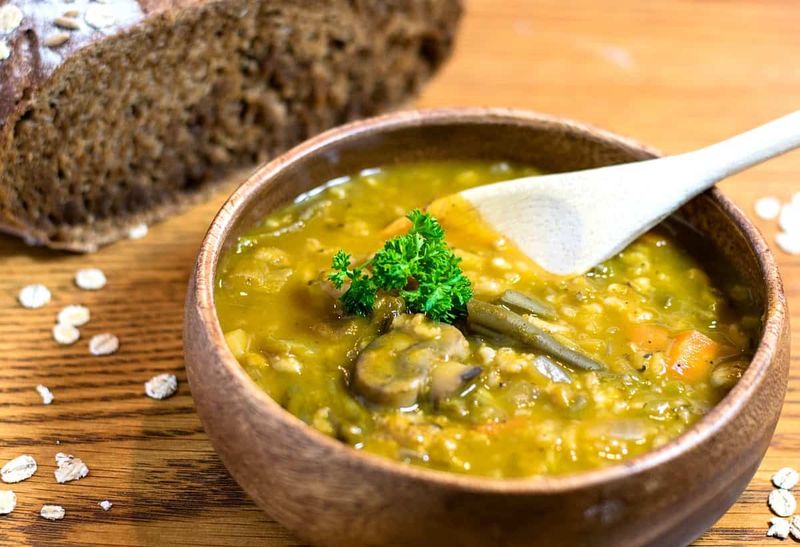
Blood, guts, and glory! Viking warriors returned from raids to feast on hearty stews that would make modern diners squirm. These protein-packed concoctions combined whatever meat was available – from sheep and goat to seal and whale – with foraged vegetables, grains, and yes, sometimes blood for thickening.
Cooked in iron cauldrons suspended over longhouse fires, these stews simmered for hours, breaking down tough meats into tender morsels. Archaeological evidence from Viking settlements shows they flavored their creations with wild herbs like angelica and juniper berries.
5. Tlacoyos
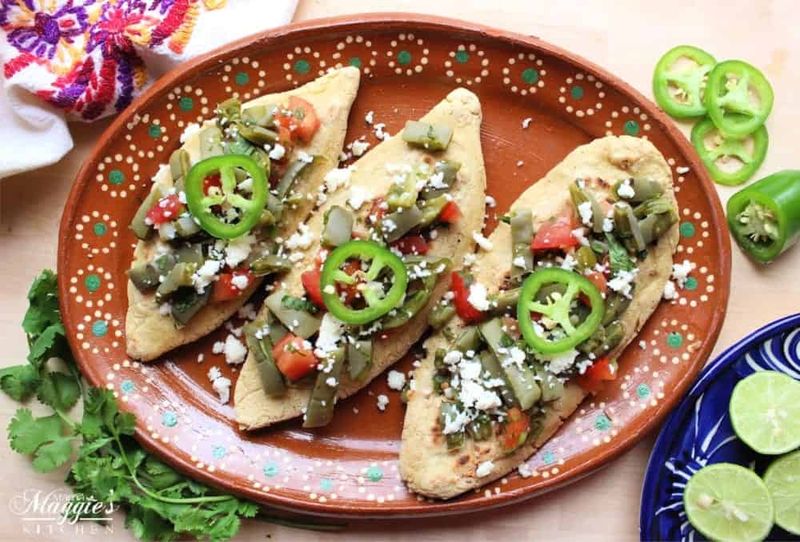
Forget food trucks – Aztecs invented street food perfection centuries ago! Tlacoyos, those oval-shaped blue corn masa cakes stuffed with beans, were the grab-and-go meal powering an empire.
Market vendors throughout Tenochtitlan (modern-day Mexico City) cooked these stuffed delights on hot comals (griddles) before topping them with nopales (cactus), salsa, and sometimes a sprinkle of insect protein. The Spanish conquistador Bernal Díaz del Castillo described Aztec marketplaces filled with food vendors, specifically noting these bean-stuffed corn cakes.
6. Pottage
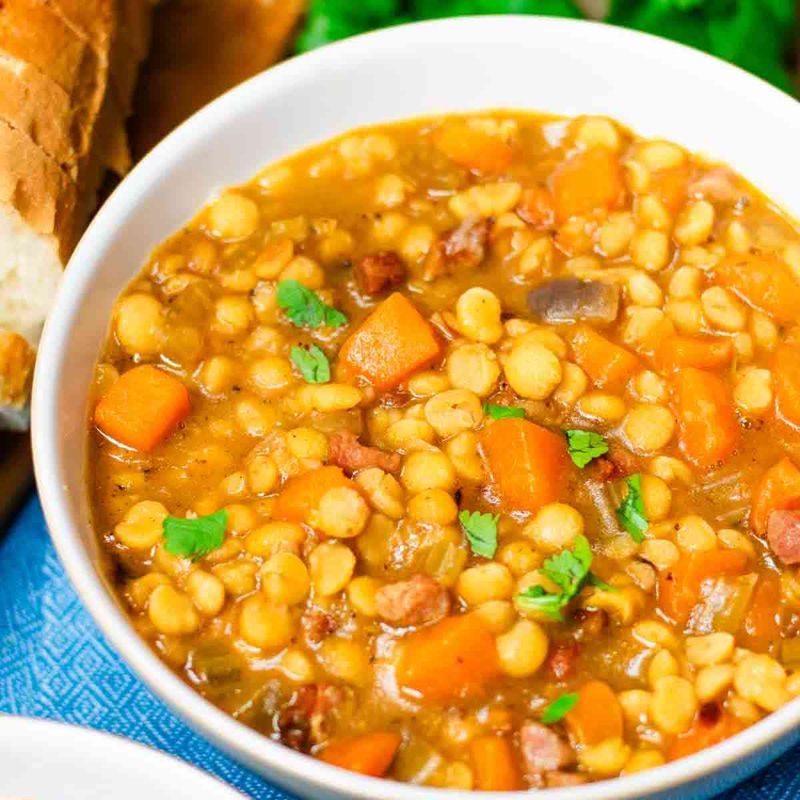
Bubbling away in every peasant cottage across medieval Europe, pottage wasn’t just dinner – it was breakfast, lunch, and life itself! This perpetual stew simmered continuously over hearth fires, with new ingredients tossed in as they became available.
The base typically contained grains like oats or barley, with seasonal vegetables added throughout the year. Meat was a rare luxury for commoners, who might celebrate special occasions by adding a bone or scraps to flavor their pottage.
7. Ottoman Sultan’s Feast
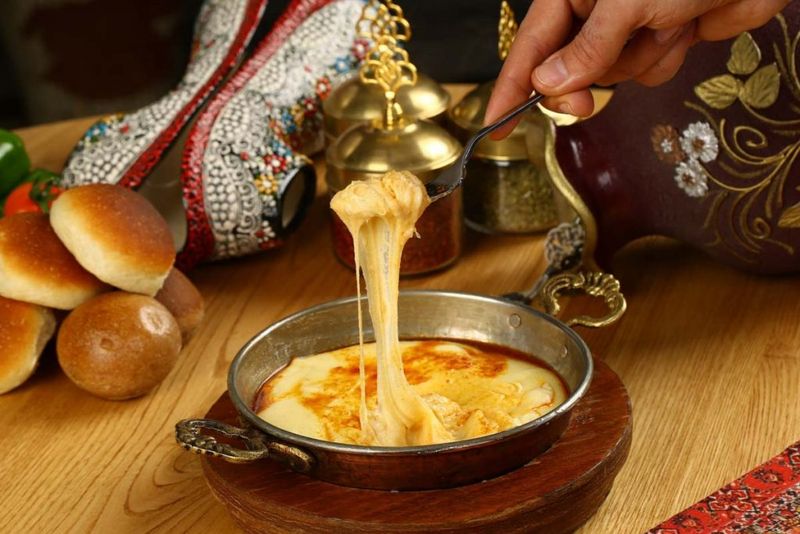
Sweet meets savory in this imperial masterpiece that had sultans licking their fingers! Ottoman palace kitchens employed hundreds of specialized chefs who created elaborate dishes like lamb and apricot stew – tender meat swimming in a sauce balanced perfectly between tangy fruit and aromatic spices.
Court records from the Topkapi Palace reveal dedicated kitchens for each type of dish, with meticulous attention paid to ingredients’ origin and quality. The combination of meat with fruit reflected Persian culinary influence on Ottoman cuisine, while spices like cinnamon and cloves demonstrated the empire’s control of valuable trade routes.
8. Onigiri
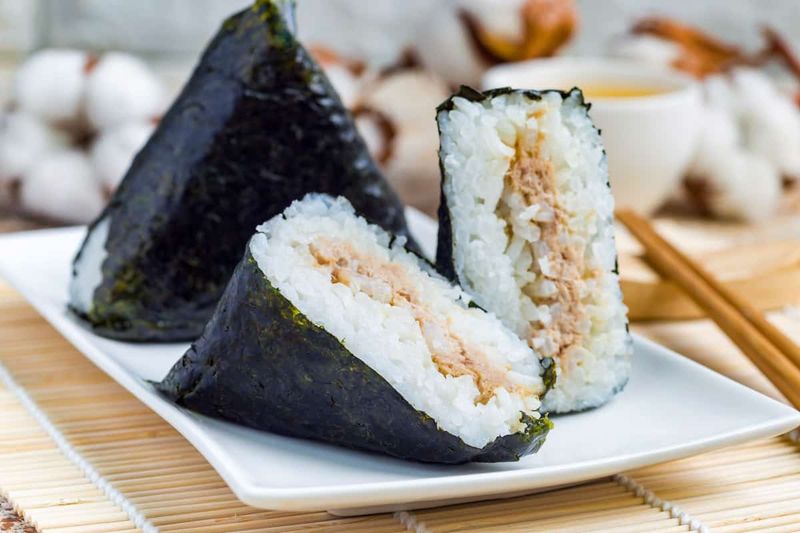
Samurai warriors didn’t have time for lunch breaks during battle – they needed rice balls with attitude! Onigiri, those triangular rice balls often filled with pickled plum (umeboshi), provided the perfect portable energy source for Japan’s elite warriors.
Historical records from the Kamakura period (1185-1333) mention these rice balls as standard battlefield fare. The salt from the umeboshi filling served as a natural preservative, while the rice provided quick carbohydrates for energy during long campaigns.
9. Sabzi Polo
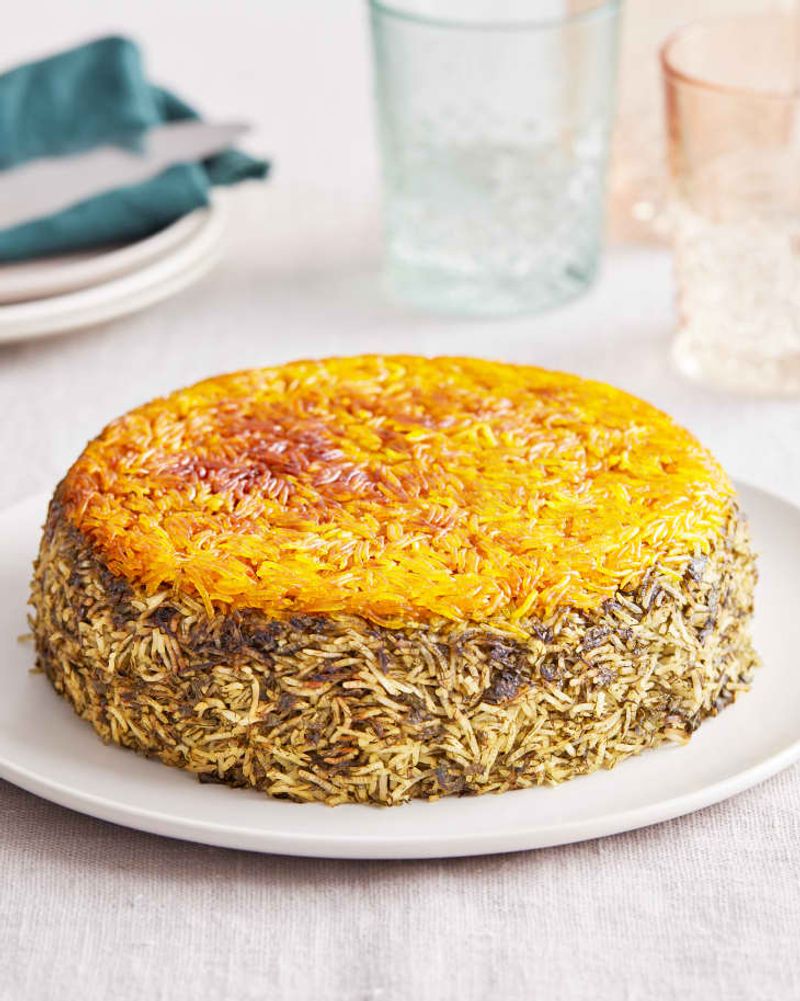
Green means go – straight into celebration mode! Persian New Year (Nowruz) tables have featured sabzi polo – fragrant rice studded with fresh herbs – for over 2,500 years, making it one of the world’s oldest continuously prepared festival dishes.
This vibrant dish combines basmati rice with massive quantities of chopped herbs including parsley, dill, cilantro, and chives, creating a verdant masterpiece that symbolizes rebirth and prosperity. Ancient Persian palace reliefs at Persepolis show similar dishes being presented to kings during spring celebrations.
10. Three Sisters Stew

Corn, beans, and squash – the original power trio! Native American tribes across North America created this ingenious agricultural system and the delicious stew that resulted from it centuries before European arrival.
The Three Sisters growing method planted these crops together: corn stalks provided climbing support for beans, beans fixed nitrogen in soil, and squash leaves created ground cover preventing weeds. When harvested and combined in stew, they created a nutritionally complete meal containing complementary proteins, complex carbohydrates, and essential vitamins.
11. Khachapuri

Cheese, bread, and egg walk into a boat – and create history’s most indulgent carb creation! Georgian khachapuri, especially the boat-shaped Adjaruli variety with its molten cheese center and runny egg, has been the Caucasus region’s ultimate comfort food for centuries.
Medieval Georgian manuscripts mention cheese-filled breads, though the iconic boat shape likely developed later. The dish perfectly showcases Georgia’s position at the crossroads of Europe and Asia, combining Middle Eastern flatbread techniques with the dairy traditions of Caucasus mountain shepherds.
12. Pot-Au-Feu

Simmering secrets of the French Revolution! While aristocrats lost their heads, ordinary French families gathered around steaming pots of pot-au-feu – the ultimate peasant dish that would eventually become France’s culinary symbol.
This “pot on the fire” combined inexpensive cuts of beef, marrow bones, and seasonal vegetables into a meal that could stretch for days. The brilliance lay in its efficiency: first came the broth with bread, then the vegetables, and finally the meat – nothing wasted, everything savored.
13. Khichdi
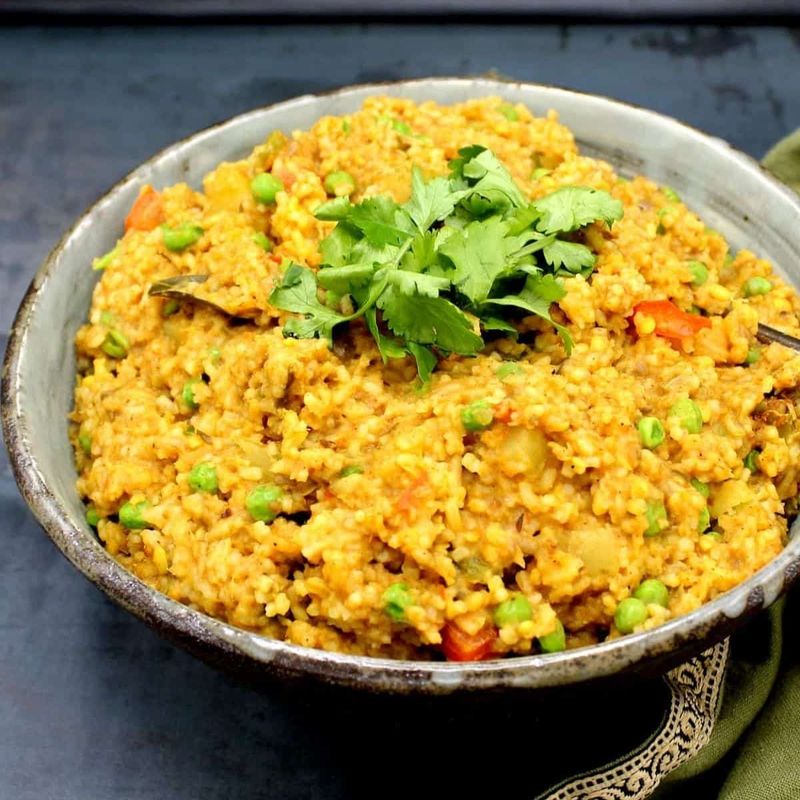
When Ayurvedic doctors and busy moms agree on the perfect meal, you know it’s special! Khichdi – that magical mixture of rice, lentils, and spices – has been India’s go-to comfort food for literally thousands of years.
Ancient Sanskrit texts from 300 BCE mention this one-pot dish as ideal for both healing the sick and nourishing the healthy. The genius lies in its nutritional completeness: rice and lentils together form complete proteins, while traditional spices like turmeric, cumin, and ginger add medicinal benefits.
14. Byzantine Honeyed Cheesecake

Cheesecake isn’t just for The Golden Girls – Byzantine emperors were wolfing it down over a thousand years ago! This ancient dessert combined fresh cheese with honey and fragrant spices, then baked on a base of crushed crackers made from wheat or spelt.
The 6th-century cookbook attributed to Anthimus describes a similar sweet cheese confection enjoyed at the Byzantine court. Unlike modern versions, Byzantine cheesecakes often incorporated exotic spices like cinnamon and saffron, showcasing the empire’s vast trade networks.

